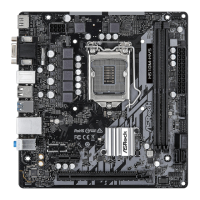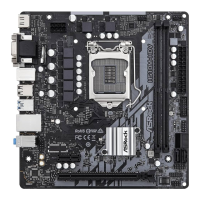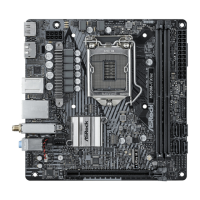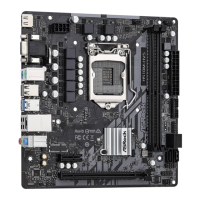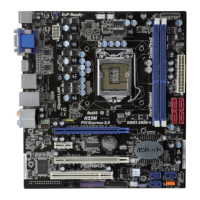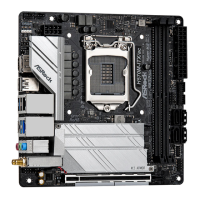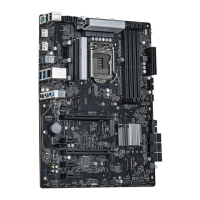Do you have a question about the ASROCK H510M-HDV/M.2 and is the answer not in the manual?
Lists all items included in the motherboard package.
Details the hardware specifications of the motherboard, including platform, CPU, chipset, memory, and slots.
Illustrates the physical layout of motherboard components and connectors with numbered references.
Depicts the rear panel I/O ports and their corresponding descriptions and functions.
Outlines essential safety measures and handling guidelines before installing motherboard components.
Provides step-by-step instructions for correctly installing the CPU into the motherboard socket.
Guides users through the process of mounting the CPU cooler and fan assembly onto the motherboard.
Explains how to properly install DDR4 DIMM memory modules into the motherboard slots.
Describes the types and usage of the PCIe slots available on the motherboard for expansion cards.
Details the function and configuration of motherboard jumpers for system settings.
Identifies and explains the purpose of various onboard headers and connectors on the motherboard.
Provides instructions for installing an M.2 SSD (NGFF) module into the dedicated M.2 slot.
Guides on installing essential drivers from the support CD for optimal motherboard functionality.
Explains the features and usage of ASRock's A-Tuning utility for system monitoring and control.
Details the ASRock Live Update & APP Shop for downloading software, drivers, and utilities.
Introduces the UEFI Setup Utility and how to access it for system configuration.
Describes the simplified EZ Mode interface for basic system status monitoring and quick settings.
Provides access to detailed BIOS settings and advanced configuration options.
Explains the system overview displayed on the Main screen of the UEFI Setup Utility.
Covers settings related to overclocking and performance tuning within the UEFI.
Provides access to detailed system configurations including CPU, Chipset, Storage, and more.
Provides access to various utility tools for BIOS updates, secure data erasure, and tech service.
Displays real-time hardware status, including temperatures, fan speeds, and voltages.
Allows setting or clearing supervisor and user passwords for system security.
Configures system boot settings, including boot order, fast boot, and CSM options.
Provides options for saving changes, discarding changes, and loading default UEFI settings before exiting.
| Processor socket | LGA 1200 (Socket H5) |
|---|---|
| Processor manufacturer | Intel |
| Compatible processor series | Intel Core i3, Intel Core i5, Intel Core i7, Intel Core i9 |
| Maximum number of SMP processors | 1 |
| Non-ECC | Yes |
| Memory channels | Dual-channel |
| Memory slots type | DIMM |
| Number of memory slots | 2 |
| Supported memory types | DDR4-SDRAM |
| Maximum internal memory | 64 GB |
| Supported memory clock speeds | 2133, 2400, 2666, 2800, 2933, 3200 MHz |
| Number of HDDs supported | 4 |
| Supported storage drive types | HDD & SSD |
| Supported storage drive interfaces | M.2, SATA III |
| Parallel processing technology support | - |
| USB 3.2 Gen 2 (3.1 Gen 2) connectors | 0 |
| USB 2.0 ports quantity | USB 2.0 ports have a data transmission speed of 480 Mbps, and are backwards compatible with USB 1.1 ports. You can connect all kinds of peripheral devices to them. |
| Wi-Fi | No |
| LAN controller | Intel® I219-V |
| Ethernet interface type | Gigabit Ethernet |
| Audio chip | Realtek ALC897 |
| Component for | PC |
| Motherboard chipset | Intel H510 |
| Audio output channels | 7.1 channels |
| Motherboard form factor | micro ATX |
| BIOS type | UEFI AMI |
| ACPI version | 6.0 |
| System Management BIOS (SMBIOS) version | 2.7 |
| Harmonized System (HS) code | 84733020 |
| Weight | 1000 g |
| Depth | 188 mm |
|---|---|
| Width | 226 mm |
| Height | 70 mm |
